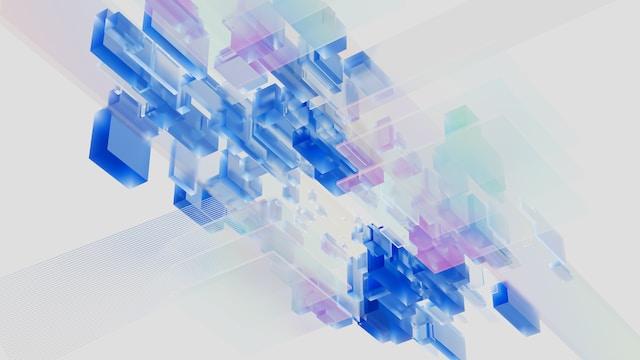
3D technology has emerged as a ground-breaking breakthrough that has revolutionized several sectors in today’s quickly changing technological scene. The uses of 3D technology are numerous and varied, ranging from manufacturing and design to entertainment and healthcare. We will examine current 3D technology developments, their effects on many industries, and their bright future in this post.
Introduction to 3D Technology
The production, manipulation, and visualization of three-dimensional objects or environments are all included under the term “3D technology.” The virtual world becomes increasingly realistic and engaging thanks to technology that helps us feel depth and dimension. Early innovations of stereoscopic imaging, in which distinct pictures were shown to each eye to produce a sensation of depth, are where the origins of 3D technology may be found.
Evolution of 3D Technology
Significant improvements in 3D technology have been made over time, changing how we see and engage with digital material. Early innovations paved the way for more advanced methods like auto stereoscopy, which did away with the requirement for special glasses to see 3D pictures. Real-time rendering of 3D graphics became possible with the development of strong computers and sophisticated graphics processing units (GPUs), creating new opportunities for creativity.
Applications of 3D Technology
Utilizing its potential to improve experiences and expedite operations, 3D technology has applications across many sectors. The production of films and the playing of video games have both been transformed by 3D technology in the entertainment and gaming sectors. It gives audiences access to visually spectacular and captivating experiences by bringing people and places to live.
The realm of medicine and healthcare has benefited greatly from 3D technology. It makes it possible to create 3D models that are anatomically correct for surgery planning, training, and patient education. Now that complicated systems can be visualized and procedures can be planned more precisely, patients will fare better.
The 3D printing and manufacturing sector has also adopted the technology. Complex items may be built up layer by layer using 3D printing, enabling quick prototyping and effective production procedures. By lowering prices, enhancing personalization, and eliminating waste, this technology has the potential to revolutionize the industrial industry.
The use of 3D technology has also aided architects and designers. It allows them to produce accurate 3D visualizations of structures and areas, which aids clients in envisioning the finished project. Tools for 3D modeling and visualization also speed up iterations and promote teamwork during the design process.
Current Trends in 3D Technology
In the field of 3D technology, a number of trends have evolved that are spurring innovation and expanding the scope of what is practical. 3D printing, commonly referred to as additive manufacturing, is one of the most well-known developments. By layering materials, it enables the production of actual items from computer models. Prototyping, manufacturing, healthcare, and even food production are just a few of the industries that may use 3D printing.
Additionally gaining popularity are augmented reality (AR) and virtual reality (VR). While AR superimposes virtual features over the actual world, VR immerses users in a simulation. These technologies are used in e-commerce, where buyers may experience virtual goods before making a purchase, gaming, training simulations, architectural visualization, and even medical imaging.
Creating digital 3D representations of real-world items or surroundings entails 3D scanning and modeling, which is another trend. Applications for this technology may be found in industries including virtual tourism, industrial design, and archaeology.
In addition, advances in 3D animation and visual effects have improved the aesthetic appeal and realism of films, television programs, and computer games. The production of lifelike characters and amazing visual spectacles is made possible by sophisticated algorithms and rendering techniques.
Impact of 3D Technology
Wide-ranging effects of 3D technology have resulted in a variety of advantages and benefits. It has revolutionized the movie-going experience in the entertainment sector, enthralling viewers with visually beautiful 3D pictures. It has enhanced diagnosis, surgical planning, and medical education in healthcare, improving patient outcomes.
3D printing has lowered prices, expanded design freedom, and facilitated quick prototyping in the industrial industry. Additionally, technology has made it easier to produce specialized goods, enabling increased individualization and creativity. Additionally, 3D technology has helped the architectural and design industries by strengthening cooperation, minimizing mistakes, and improving visualization.
However, 3D technology also has drawbacks and limits in addition to its benefits. For some people and companies, the expense of purchasing and maintaining 3D hardware and software might be prohibitive. Widespread adoption may also be hampered by the requirement for specialized knowledge and technical complexity. In addition, industries like 3D scanning and printing raise issues of intellectual property rights and ethics.
Future of 3D Technology
Looking ahead, 3D technology has a bright future with further developments and new opportunities in store. The ability to print functioning human tissues and organs is one of the revolutionary potentials of emerging technologies like 3D bioprinting. This discovery may help to solve the problem of organ scarcity and raise transplantation success rates.
Additionally, the combination of 3D technology with AI and machine learning algorithms brings up new possibilities for automation and improvement. AI-enabled software can analyze and improve 3D designs, hastening and streamlining the procedure. Artificial intelligence (AI) can produce lifelike 3D characters and surroundings in the entertainment sector, eliminating the need for physical modeling.
Future applications of 3D technology include those in the sectors of building, education, and potentially space travel. Because 3D technology is so immersive, it may improve learning opportunities by delivering dynamic and interesting instructional materials. The planning, communication, and efficiency of building projects may all be enhanced by 3D modeling and visualization. The use of 3D printing in space exploration can make it easier to produce tools and structures as needed and lessen the need for resupply flights.
Conclusion
Finally, 3D technology has advanced significantly in recent years, revolutionizing sectors and opening up new opportunities. The procedures and experiences it has enabled have been revolutionized by its applications in entertainment, healthcare, manufacturing, and design. Three-dimensional printing, virtual reality, and three-dimensional scanning are current phenomena that are pushing the limits of innovation. Even though 3D technology has many advantages, there are drawbacks including high costs and complicated technical requirements. However, with continual developments and new technologies, 3D technology has the potential to revolutionize many industries and change the course of human history.







